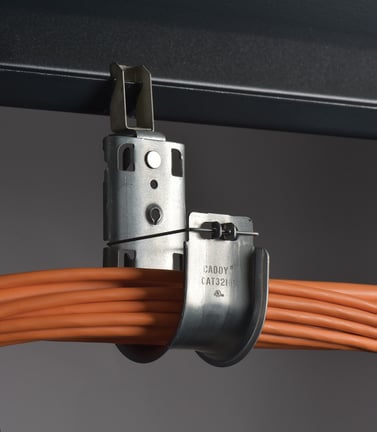 Let's first begin by learning about bend radius and how it is calculated. During installation, cables are bent or flexed to accommodate environmental considerations, such as obstacles and elevation or directional changes. This is normal! However, what happens if your cable can't be bent the way you need it to be? How do you even know how much your cable can be bent?
Let's first begin by learning about bend radius and how it is calculated. During installation, cables are bent or flexed to accommodate environmental considerations, such as obstacles and elevation or directional changes. This is normal! However, what happens if your cable can't be bent the way you need it to be? How do you even know how much your cable can be bent?
The answer is minimum bend radius. The minimum bend radius is the smallest radius the cable may be bent without experiencing damage. Of course, minimum bend radius guidelines do vary by cable type and industry standards, so it's important to take a look at the cable you want to use and the environment in which you want to install it.
You can calculate the bend radius with the following formula:
Minimum bend radius = cable outer diameter x cable multiplier
Alright, so we're familiar with bend radius and how it's calculated. Now, let's look at why it matters. One place to start is the standard. ANSI/TIA 568.0-D for Generic Telecommunications Cabling requires a minimum bend radius of four times the cable diameter for 4-pair balanced twisted-pair cable during and after installation. For a typical CAT 6A cable (.25 to .28”), bend radius for appropriate cable supports, such as a J-Hook, need to be at least 1”. This standard helps ensure performance, supports technological innovation and provides globally accepted products.
Not all non-continuous cable supports provide the proper bend radius. Thus, it's critical to ensure that your data infrastructure strategy includes supports that meet all of the necessary requirements, including proper bend radius support. After all, there are consequences to non-compliance with the standards...Cables that are supported by non-continuous supports that cause indents and creases in the cable jacket may experience reduced cable performance or even heat build-up in PoE applications.
So, how do you find the right solution? How do you meet the minimum bend radius? Not all non-continuous cable supports are created equal, and not all of them provide the proper bend radius. Trust nVent CADDY to provide that proper bend radius support.
The Cat HP J-Hook System from nVent CADDY is an advanced, non-continuous pathway support solution for today’s high-performance cabling systems. Highly engineered features help ensure a stable and secure installation that complies with industry codes and standards for high-performance cables. Click below to shop this system:
Shop the Cat 5P J-Hook System from nVent CADDY
Questions? Contact your local Accu-Tech representative or learn more about nVent here.


.png?width=58&height=58&name=X_logo_2023_(white).png)
